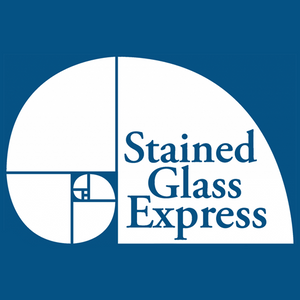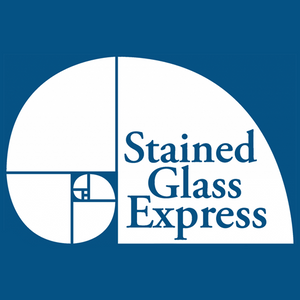A Guide to Commonly Used Terms in the Art Glass Field
This guide is based on document originally put out by Spectrum Glass in 2000.
This listing of frequently used terms and their brief descriptions includes those which apply to the products of all art glass manufacturers and not just those used in connection with Spectrum Glass. It is written in non-technical language for ease of understanding by the student and non-professional and is not intended to be completely authoritative or all inclusive.
Antique –
- Full-Antique: Term applied to art glass produced by the historical mouth-blown cylinder method. The craftsman blows a glass cylinder, which is annealed and cooled. The cylinder is then scored lengthwise, separated, reheated and folded out into a flat sheet. Common characteristics include attractive linear striations and a very pristine surface.
- Drawn-Antique: (also called semi-antique, machine-antique or new-antique) A simulated full-antique produced by the Vertical Draw method. The textural striations are mechanically applied. Quality is excellent and cost is less than full-antique. GNA (German New Antique) is a common example.
- Scribed-Antique: A simulated full-antique produced by the Double Roll method. The linear striations are scribed into the hot glass surface. Quality is excellent and cost is considerably less than full-antique. Introduced by Spectrum Glass in 1996 under the trade name Artique.
- Solid Color Opalescent Glass: Glass which is both colored and crystallized, creating a single color sheet, more opaque than a cathedral. Sometimes called “opalized” glass.
- Mixed Opalescent Glass: White glass (opal) is mixed with one or more other colors of glass to create a variegated, multi-colored sheet. Light transmission varies with composition. Also called “variegated opalescent,” sometimes “streaky.”
- Rolled textures: In rolled glasses (see definitions below) one of the forming rolls is embossed with a texture that is imprinted on the glass as the sheet is formed. This produces glass smooth on one side and textured on the other. Common examples are “hammered”, “granite” and “muffle.”
- Natural textures: Any textural effect created without mechanical influence or embossed rolls. Includes baroque and waterglass.
- Cold glass textures: This category includes glue chipping, etching, sandblasting and any other surface treatment performed on the cold glass sheet at room temperature.

